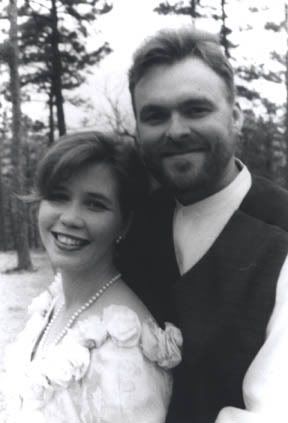I participated in the Conserving Arkansas' Agricultural Heritage second annual seed swap in Mountain View, AR last Saturday. It was a wonderful event, and I'd like to share my experience and thoughts with you.
I found my way to the Ozark Folk Center easily enough, and then followed the sign to the proper building. Inside there was a room with comfortable furniture and refreshments (and they were fresh!) to the left, and a room full of seed savers to the right. I went right. Long tables covered in seeds and displays lined the walls, and round tables filled the center of the room, leaving just enough space for two abreast between them. It was not cramped, but not far from it. I found Dr. Campbell and introduced myself. He invited me to find a table and set up, but I opted to make my way around the room first. I found a corner to start in, and made the first of many good discoveries.
It’s possible I came over prepared. I brought with me a few hundred varieties of tomatoes, peppers, eggplant, corn, beans, squash, okra, cowpeas, and leafy greens. Never seemed to get past the first three, though, except for one pack of Red Rippers. I wish I had remembered to bring flower seeds… Most of the other seed savers brought larger quantities of fewer varieties. I may follow that example next year, to some degree. My binders with baseball cardholders holding seed packets (nine to a page) were a big hit – it’s always fun to watch an idea spread. It seemed like more of a seed share than a seed swap; most people seemed more interested in giving than trading.
One of my favorite discoveries was the Ozark Seed Bank from Brixey, MO (www.ozarkseedbank.org). They are maintaining several interesting varieties that do well in the Ozarks bioregion, including Orange Grape Tress tomato, a.k.a. Lycopersicon humboldtii.
Swapping seeds face to face is a much different experience than it is by computer. I’ve wanted to save and swap seeds since I first encountered the idea in an ad for the Seed Saver’s Exchange in Mother Earth News decades ago (or was it in Grit?), but back then I didn’t know that pretty much any old OP would have sufficed for a trade (whatever I had to trade then would be an heirloom by now, anyway...) My interest grew in 2002 when I discovered the Baker Creek catalog, but searching locally for seed savers to trade with never panned out.
Then in 2006 I discovered seed trading on the Internet. Since then I have traded hundreds if not thousands of seed packets. The volume and access seems limitless. You develop a rapport with the people you trade with, but you never meet [most of] them face to face.
The second annual Conserving Arkansas’ Agricultural Heritage seed swap is the first one I’ve been to. Sitting to talk and swap with actual human beings is a much more primal experience than trading online. More importantly, you are talking to interesting folks who have experience growing their seeds in your bioregion! That is priceless, when you consider that the vast majority of online trading friends do not have this particular advantage to offer. I thought the trade-off would be less to choose from, but I found quite a few rare varieties (plus I am comfortable knowing that they grow well here).
I was surprised when a filmmaker asked me to be in his documentary about the seed swap. But hey, I’m game. The cinematographer, his assistant, and I met Saturday morning at the Heirloom Seed Shop, where they shot me buying seeds and talking about various heirloom gardening subjects. The new manager Chris was kind enough to open the store on her day off for us, and she provided some good footage as well. Later on, William the film student followed me for footage at the seed swap in Mountain View. Afterwards, somehow I found myself in a filmed panel discussion about the event. At the end, the filmmaker Zack asked us to state our names and titles in turn. I was last, and the only one without a title – it was then that I realized the caliber of my company. You’ll meet them when the documentary is online next month. I’m told there’s a good chance not all of my contribution will end up on the cutting room floor, so to speak.
The burning question: what did I find? Here’s a full list of the varieties I came home with (names as they appear on the packets):
Clark & Karr Family white half runner bean
John Hovis cornfield bean
Meier Family purple pole bean
Whippoorwill cowpeas
Bacello yard long bean
Anna’s Taiwan long bean
Purple podded longbean
castor bean
Great Burdock (gobo)
Nankeen cotton
Gold Coast okra
White Velvet okra
Evergreen bunching onion
Lunaria money plant (ornamental)
Musselburgh leek
Fuller’s Teasel (inedible)
Tomatoes:
Ethel Watkins
Hazelfield Farm Red
Orange Grape Tress (Lycopersicon humboldtii)
Stone
Super Sioux
I encourage all of you to look for seed swaps (or start one!) in your region. The trading we do online is very important for the spreading of genetic diversity, but trading with people in your locality will help you zero in on varieties that are highly likely to do well for you. Plus, doing some footwork in your own region just might turn up some new and rare varieties that you can keep from extinction and introduce to the rest of the world!
Monday, February 23, 2009
Subscribe to:
Posts (Atom)
